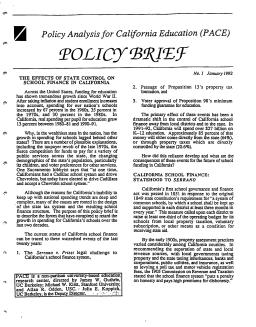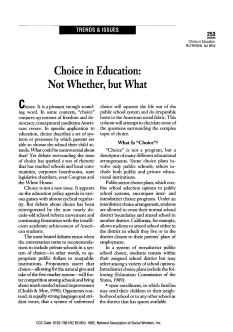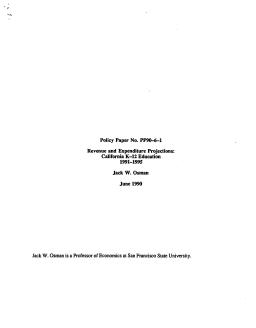Published
Summary
Funding for education in the US has grown significantly since World War II, but in California, spending for schools has lagged behind other states. Reasons for this include the taxpayer revolt of the late 1970s, competition for funds, changing demographics, and voter preferences. Many of the causes are rooted in the state tax system and school finance structure. Californians used to have a top school system but now have a lower-quality one due to these factors.
Not Whether, But What
Published
Summary
Debate over school choice has been reignited due to the school reform movement and frustration with low academic achievement. The conversation becomes heated when private schools are included in the system of choice, as proponents believe it will foster competition and improve schools, while opponents argue it will harm public schools and society. This article aims to shed light on the complex issue of school choice.
California and Senate Bill 813
Published
Summary
In 1983, the California legislature enacted a series of incentive programs intended, in part, to encourage local school districts to devote more resources toward instructional expenditures. Analysis of district response to those incentives shows they were more effective in directing spending toward direct instruction than were general or categorical grants. However, it appears that as the incentive funds were rolled into general aid revenues, district spending patterns began to revert to the same distribution of expenditures observed prior to enactment of the incentives.
California K–12 Education 1991–1995
Published
Summary
This report discusses the importance of forecasting revenues and expenditures for public sector planning and budgeting. It highlights three characteristics of California's recent experience. First, K-12 funding rose 91% from 1980 to 1989, but real revenue growth was tempered by inflation. Second, California relies more on state revenues for K-12 education than the rest of the US. Third, California's "effort" in raising K-12 revenues in 1986 was lower than the US average, and revenue efforts for both schools and other public functions are below the national average.
A Comparison of Education Reforms in the United States and Great Britain
Published
Summary
The new global economy is reshaping education worldwide, necessitating policies that expand access and enhance quality. Despite different educational systems, similar issues need to be addressed, resulting in an international convergence of education policies. The article discusses the emerging economy, educational challenges, policy alternatives, and compares recent reforms in the US and UK.




